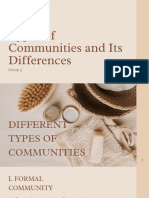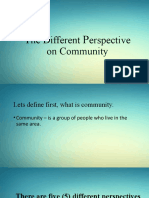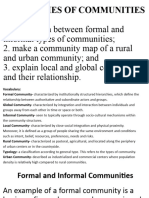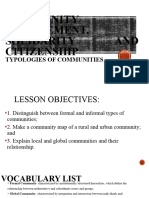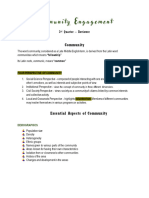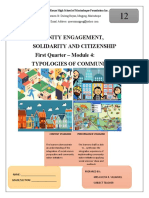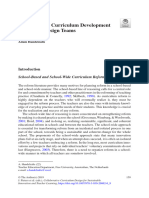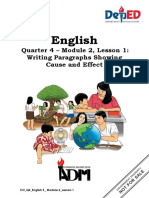0% found this document useful (0 votes)
4 views50 pagesCSC Q1 Lesson 4
The document outlines various types of communities, including formal, informal, urban, rural, global, and sectoral communities, each defined by distinct characteristics and purposes. Formal communities are structured groups with specific goals, while informal communities focus on personal and social needs. Urban communities are densely populated with both advantages and disadvantages, whereas rural communities emphasize deep relationships and shared values, and global communities connect people across nations, addressing issues like human rights and climate change.
Uploaded by
mirandaprincekylemCopyright
© © All Rights Reserved
We take content rights seriously. If you suspect this is your content, claim it here.
Available Formats
Download as PPTX, PDF, TXT or read online on Scribd
0% found this document useful (0 votes)
4 views50 pagesCSC Q1 Lesson 4
The document outlines various types of communities, including formal, informal, urban, rural, global, and sectoral communities, each defined by distinct characteristics and purposes. Formal communities are structured groups with specific goals, while informal communities focus on personal and social needs. Urban communities are densely populated with both advantages and disadvantages, whereas rural communities emphasize deep relationships and shared values, and global communities connect people across nations, addressing issues like human rights and climate change.
Uploaded by
mirandaprincekylemCopyright
© © All Rights Reserved
We take content rights seriously. If you suspect this is your content, claim it here.
Available Formats
Download as PPTX, PDF, TXT or read online on Scribd
/ 50







